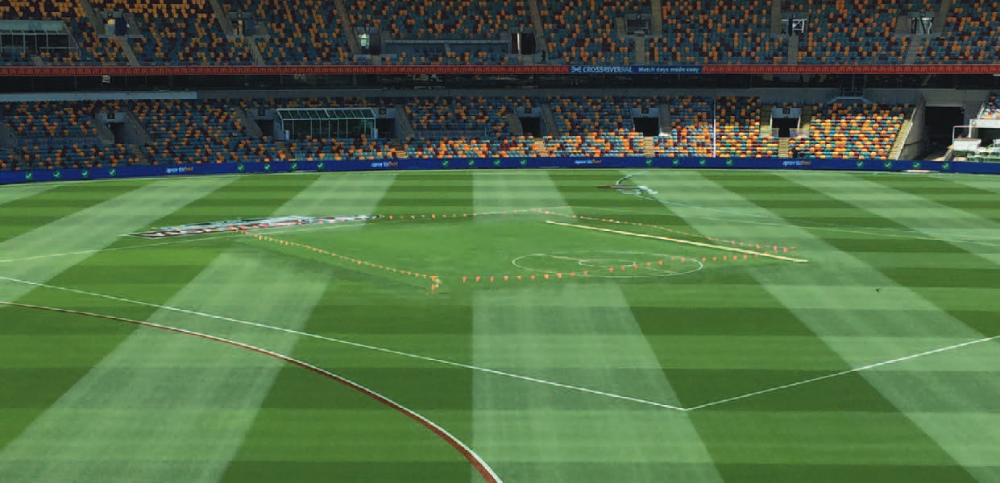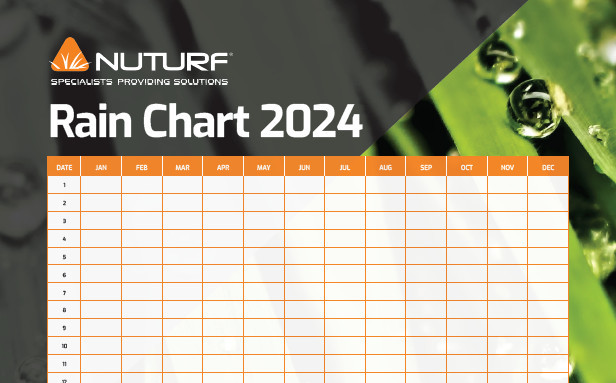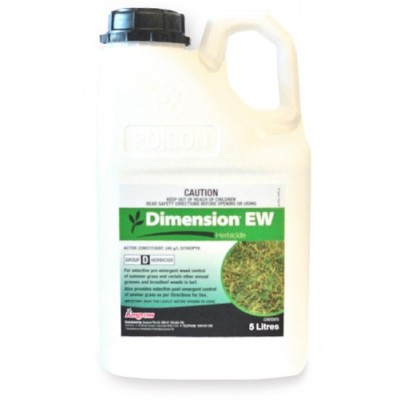How To Manage Summer Grassy Weeds
Annual weeds germinate, complete their vegetative growth phase and set seed within a calendar year. Plants that have this type of lifecycle often set a generous amount of seed as their species survival has had to cater for the fact only a portion of those seeds will find fertile ground and a supportive environment in which to grow. There are registered options to address summer grassy weeds post emergence or pre emergence. A post emergent approach allows treatments to occur only if required and can be targeted to specific areas if infestation is isolated or limited. This can potentially reduce the time and cost assigned to managing such weeds. However, this has the inherent problem that weeds have grown in a surface thus competing with desirable turf, interfering with visual and surface quality, possibly affecting surface integrity and by extension the user experience of the surface.

There are many circumstances in which the presence of any weed is highly undesirable and the clear preference is to address them very early in their development. So early in fact that there is minimal or no net effect to the desired turf surface – this is the pre em option. This has advantages for aesthetics and surface playability, but does require a pre-emptive approach that necessitates treatment to areas without knowing what the eventual weed population may have been. It also requires greater discipline as critical seasonal application windows must be strictly adhered to in an effort to optimize success.
The reality for turf managers
Annual grass weeds have been more challenging to address in modern turf management than say broad leaf weeds. Whilst there are post emergent options the list is short. The variable results that have been experienced by some when using post emergence approaches has also made this a path less taken. The visual interruption these species can create with seed heads sitting proud of an otherwise uniform turf stand can make their presence highly undesirable and when combined with their rapid growth rates, tolerance of a wide variety of conditions, and intense ability to compete it has been very difficult to run that gauntlet.
As a generalization pre-emergent approaches have proven a more predictable method. Not to say perfect, but certainly more free of major fluctuations in surface composition and quality. The longevity of performance from the tools available have worked reasonably well and safety to desirable turf has been quite good. If well planned, two distinct windows in spring and autumn can be catered for each year keeping resource use focused and organized – more in line with modern turf management trends that have moved away from ad-hoc treatments.
A more pre-emergent focused strategy has not removed the post em element entirely, but certainly has reduced it. The post em applications tend to be more clean ups of the odd escape or a complementary approach for difficult to access spots or adjacent areas acting as further seed reservoirs. It remains however a key part of managing resistance as any escapes that have occurred through suspected resistance should be promptly treated with an alternate chemistry to the group the miss has occurred with.
Getting the duration of cover just right
We term the warm season element of these weeds summer grassy weeds, but the reality is they continually germinate from late winter when a hint of warmth first presents, all the way through to autumn – and sometimes longer. On an ’average’ site with some clay or OM we can get the multi-season coverage we so often seek as many of the pre em chemistries bind well to these materials aiding persistence and longevity. But sometimes to cover this period it turns out better efficacy-wise to split the treatment into two applications of equal or similar rate – or possibly even three. There is nothing wrong with such an approach so long as labels and manufacturers endorse that approach. The advantage in this method is the soil concentrations from beginning to end of the treatment window varies less, and weed presence tends to vary less commensurately. The vulnerable tail can be better avoided.
Application is the greatest determinant of success
Most pre-emergent herbicides look to treat seed banks that themselves are positioned very high in the soil profile. We therefore need to create a pre emergent herbicide barrier that matches this positioning. Broadly speaking, for pre emergent products we seek to create a herbicidal barrier that either weed seed root tips penetrate down in to, or the coleoptile of the germinated seed shoot moves up through. It is this direct contact with susceptible tissues that governs effect. Group D herbicides for example are targeting the cell division process in the very tip of the developing root, where as members of PPO inhibitor family are acting in the pathway that ultimately creates chlorophyll.
Getting this placement right requires the combination of suitable droplet spectrum, high application volume and post application irrigation. Ideally nozzles should be 08’s or even floodjets – something that can give mimimum coarse droplets. The combination of forward speed and pressure should give hectare volumes above 800L, and post application a light irrigation (or a light shower if you can predict it) should be planned to move the herbicide off foliage and ensure it is moved into the soil profile.
How Nuturf can help you
Nuturf stock a suite of chemistries and brands to cater for all your pre emergent needs and preferences. We can provide options suited to single application long term approaches, or multiple application short term approaches. We offer products from various chemistry groups to ensure you can access multiple modes of action to avoid resistance, and can offer the technical advice to help you understand product application and placement, selectivity functions and the influence of differing soil types on likely outcomes.
We can supply liquid options for those with suitable equipment or granular options for those preferring to adopt a mechanical spreader application approach. We can also offer combination products with herbicide and NPK nutrition in a single package.














